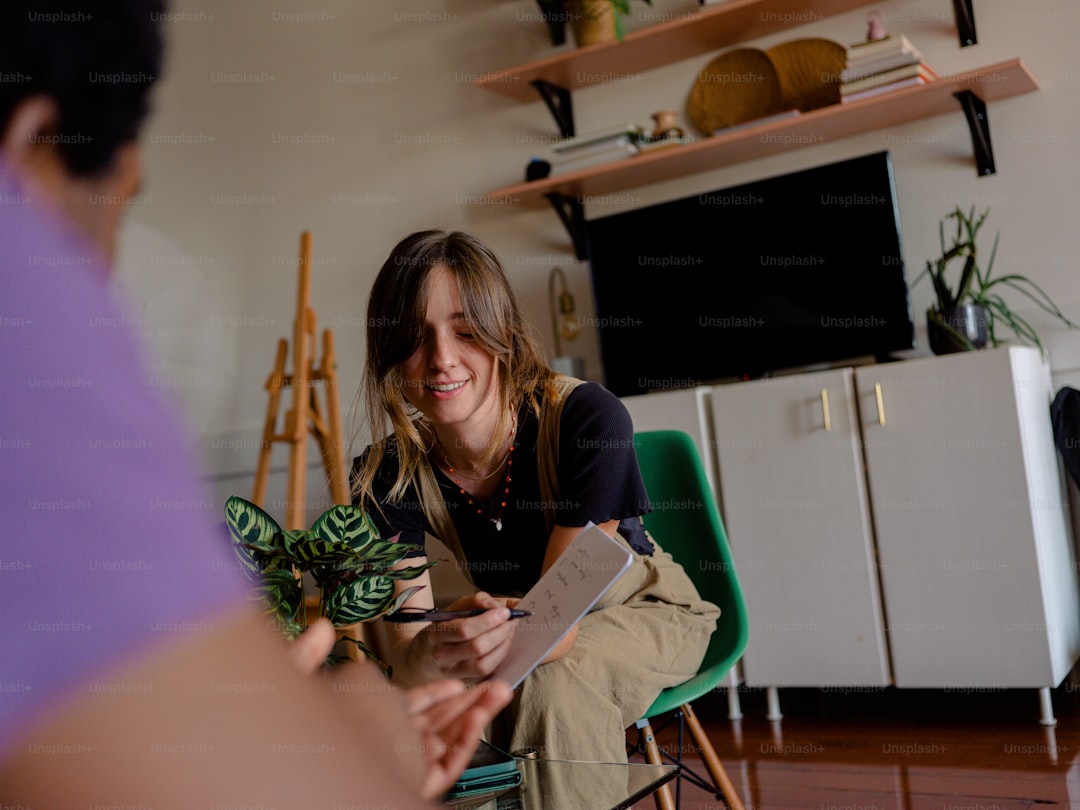The Future of Workspaces From Home Offices to International Coworking

Introduction
The way people work has been changing for decades, but the speed of transformation accelerated dramatically in the last few years. What was once a niche perk—working from a coffee shop or a quiet room at home—has become a mainstream expectation. Companies are no longer limited to a single headquarters or a regional office park. Instead they are building ecosystems that span a personal home office, a flexible desk in a local coworking hub, and a fully equipped workspace in another continent.
This article explores the forces shaping the future of workspaces, the design principles that make each environment productive, and the technology that ties them together. From the ergonomics of a home desk to the cultural playbook of an international coworking network, the goal is to give readers a clear picture of what comes next and actionable guidance for individuals and organizations looking to stay ahead.
The Evolution of Remote Work
Remote work is not a brand new concept. Early telecommuters in the 1990s relied on dial‑up modems and printed documents mailed to a central office. The internet boom of the early 2000s introduced email, basic video conferencing, and cloud storage, making it possible for small teams to collaborate across city borders.
The pandemic forced a global experiment. In less than three months, millions of workers swapped a daily commute for a laptop on a kitchen table. Companies that had previously resisted flexible policies were suddenly forced to adopt them or risk losing talent. The outcome was a massive data set showing that many roles could be performed just as well—sometimes better—outside a traditional office.
Now that the emergency has passed, the conversation has shifted from “Can we work remotely?” to “How do we design the best mix of physical and digital workspaces?” The answer lies in understanding the strengths and weaknesses of each setting and aligning them with business objectives, employee preferences, and cultural values.
Home Office Design Trends
Ergonomics as a Foundation
A well‑designed home office starts with ergonomics. A chair that supports the lower back, a monitor at eye level, and a keyboard that allows neutral wrist positioning can prevent chronic strain and increase focus. Companies are increasingly offering stipends for ergonomic furniture, recognizing that a comfortable setup reduces absenteeism and improves morale.
Boundary Creation
One of the biggest challenges of remote work is the blurring of personal and professional life. Physical boundaries—such as a dedicated room or a portable room divider—help signal to family members and the brain that it is time to work. Psychological boundaries, like a clear start‑up routine or a “shutdown” ritual at the end of the day, reinforce this separation.
Light and Sound Management
Natural light boosts alertness and mood, so positioning a desk near a window is a simple but powerful tweak. When that is not possible, daylight‑mimicking bulbs can simulate the benefits of sunlight. Sound‑absorbing panels, white‑noise machines, or noise‑cancelling headphones help maintain concentration in noisy households.
Technology Integration
A home office must be a hub for connectivity. A high‑speed broadband connection (at least 100 Mbps for video calls and large file transfers), a reliable router, and a backup mobile hotspot are essential. Docking stations, dual monitors, and USB‑C hubs streamline the workflow and reduce the friction of switching between devices.
Tech Foundations for Flexible Work
Cloud‑First Infrastructure
When employees work from multiple locations, data must be accessible from anywhere without sacrificing security. Cloud‑based file storage, collaboration suites, and virtual desktops allow users to log in from a laptop at home, a tablet in a coworking space, or a laptop on a train. Companies that adopt a cloud‑first approach also benefit from automatic updates, scalability, and reduced on‑premise maintenance.
Zero‑Trust Security
Traditional security models relied on a perimeter—protect the office network and everything inside is safe. With a distributed workforce, that model no longer works. Zero‑trust architecture assumes every device, user, and connection could be compromised and verifies each request before granting access. Multi‑factor authentication, device health checks, and micro‑segmentation are key components.
Collaboration Platforms
Real‑time collaboration tools have evolved from simple chat apps to integrated ecosystems that combine messaging, video, task management, and knowledge bases. Choosing a platform that integrates with existing workflows reduces context switching and keeps teams aligned. Features such as asynchronous video comments and shared whiteboards enable collaboration across time zones.
AI‑Powered Assistance
Artificial intelligence is becoming a silent partner in the modern workspace. AI transcription services turn meetings into searchable notes, while smart scheduling assistants find optimal meeting times across global teams. Predictive analytics can suggest when a user is likely to be most productive, prompting them to focus on deep work or schedule breaks.
Hybrid Models: Blending the Best of Both Worlds
Hybrid work combines the flexibility of remote work with the social and collaborative benefits of a physical office. The key is to design policies and spaces that make each mode purposeful rather than interchangeable.
Intentional Office Days
Instead of mandating a set number of days in the office, many organizations now assign “collaboration days” where teams gather for workshops, brainstorming sessions, or client presentations. This approach respects individual work preferences while preserving the value of face‑to‑face interaction.
Distributed Team Structures
Large enterprises are moving away from a single headquarters model toward a network of regional hubs. Each hub serves the local talent pool, complies with regional regulations, and reduces travel costs. The hubs are linked through shared technology standards and cultural rituals, ensuring a consistent brand experience.
Flexible Desk Policies
Desk booking systems allow employees to reserve a workstation on demand. This reduces the need for dedicated desks, maximizes space utilization, and supports a fluid workforce that may rotate between home, coworking, and office locations.
Performance Measurement Shifts
Output, not hours, becomes the primary metric. Teams set clear objectives, key results, and deliverables, and managers focus on progress and quality rather than physical presence. Transparent dashboards keep everyone informed and accountable.
The Rise of International Coworking
Coworking spaces have exploded from niche community hubs to global networks that offer consistent standards across cities and continents. For companies with a distributed workforce, coworking provides a ready‑made office without the overhead of long‑term leases.
Brand Consistency Across Borders
Leading coworking operators maintain a uniform design language, technology stack, and service level agreement across locations. Members can walk into a space in Singapore, Berlin, or São Paulo and find the same high‑speed internet, meeting rooms, and community events. This consistency reduces onboarding friction for traveling employees.
Community‑Driven Innovation
Coworking spaces foster cross‑industry collaboration. Informal meetups, skill‑share sessions, and hackathons encourage serendipitous interactions that spark new ideas. Companies can tap into this ecosystem to gain fresh perspectives, recruit talent, or test market concepts.
Flexible Membership Models
Memberships range from a hot‑desk in a shared area to a private office with dedicated branding. Many providers also offer “pay‑as‑you‑go” day passes, allowing employees to work from a coworking space only when they need a change of scenery or a quiet place for a client call.
Sustainability and Wellbeing
Modern coworking operators prioritize sustainable design—using reclaimed materials, energy‑efficient lighting, and plant‑rich interiors. Wellness amenities such as meditation rooms, standing desks, and on‑site fitness classes support employee health, aligning with corporate wellbeing initiatives.
Global Connectivity and Cultural Integration
Working across continents introduces both opportunities and challenges. Seamless connectivity and thoughtful cultural integration are essential for a cohesive experience.
Time‑Zone Sensitive Scheduling
Tools that display participants’ local times, suggest overlapping windows, and allow asynchronous contributions reduce meeting fatigue. Organizations can adopt a “core hours” approach where a few overlapping hours each day become the default window for live collaboration.
Language Support
Real‑time translation features in video platforms and collaborative documents help bridge language gaps. Companies can also provide language learning resources, encouraging employees to develop basic conversational skills in the languages of their most frequent partners.
Cultural Awareness Programs
Regular workshops on cultural norms, communication styles, and etiquette help prevent misunderstandings. Highlighting local holidays, celebrating regional achievements, and encouraging employees to share personal stories create a sense of belonging across borders.
Data Residency and Compliance
When data flows across multiple jurisdictions, compliance with regulations such as GDPR, CCPA, and local data sovereignty laws becomes complex. Selecting cloud providers with region‑specific data centers and implementing data classification policies ensures legal compliance while maintaining performance.
Wellbeing and the Human Side of Distributed Work
Productivity tools and sleek workspaces are only part of the equation. Employee wellbeing remains a cornerstone of any successful flexible work strategy.
Mental Health Resources
Virtual counseling, mental health days, and mindfulness apps provide support for remote workers who may feel isolated. Managers should receive training on recognizing signs of burnout and creating an environment where seeking help is normalized.
Physical Activity Integration
Standing desks, scheduled stretch breaks, and virtual group fitness classes encourage movement throughout the day. Companies can offer stipends for home gym equipment or partner with local coworking spaces that include wellness facilities.
Social Connection Rituals
Virtual coffee chats, “watercooler” channels, and quarterly in‑person retreats help maintain the social fabric of a team. Shared experiences, such as online games or collaborative playlists, build camaraderie even when participants are miles apart.
Feedback Loops
Regular pulse surveys, one‑on‑one check‑ins, and anonymous suggestion boxes give employees a voice in shaping their work environment. Acting on feedback demonstrates that the organization values employee input and is willing to iterate.
Future Scenarios: What Might the Workspace Look Like in 2030?
Hyper‑Personalized Environments
Advances in sensor technology and AI will enable workspaces that adapt automatically to individual preferences. A desk could adjust height, lighting, and temperature based on a user’s biometric data, while virtual backgrounds respond to the content of a meeting.
Distributed “Office‑as‑a‑Service”
Instead of leasing a permanent location, companies may subscribe to an office‑as‑a‑service platform that provisions workstations, meeting rooms, and support staff on demand. This model would allow organizations to scale up or down instantly in response to project needs.
Immersive Collaboration
Extended reality (XR) headsets could create shared virtual rooms where participants interact with 3‑D models, whiteboards, and holographic data as if they were in the same physical space. This technology would blur the line between remote and in‑person collaboration.
Sustainable Footprint Emphasis
Carbon accounting will become a standard part of workspace planning. Companies will choose locations, travel policies, and energy sources based on their impact metrics, favoring local coworking hubs and remote work to reduce emissions.
Practical Steps for Individuals
- Assess Your Home Setup – Conduct an ergonomic audit, improve lighting, and ensure reliable internet.
- Create Boundaries – Designate a specific area for work and establish a daily routine that signals the start and end of the workday.
- Invest in Core Tools – Choose a collaboration suite that integrates with your workflow and master its shortcuts.
- Stay Connected – Schedule regular check‑ins with teammates, join virtual communities, and attend local coworking events when possible.
- Prioritize Health – Use a timer for movement breaks, practice mindfulness, and keep a consistent sleep schedule.
Practical Steps for Organizations
- Develop a Flexible Workspace Policy – Outline expectations for remote, hybrid, and coworking usage, including equipment stipends and security guidelines.
- Standardize Technology – Deploy a cloud‑first infrastructure, zero‑trust security, and a unified collaboration platform across all locations.
- Design Hybrid Schedules – Identify activities that benefit from in‑person interaction and schedule them as intentional collaboration days.
- Partner with Global Coworking Networks – Negotiate corporate rates, ensure consistent branding, and provide employees with easy access to nearby hubs.
- Measure Outcomes – Use data on productivity, employee satisfaction, and cost savings to refine the workspace strategy continuously.
Conclusion
The future of workspaces is no longer a binary choice between a corporate office and a home desk. It is a fluid ecosystem that blends personal comfort, technological robustness, community energy, and cultural sensitivity. By understanding the strengths of each environment—home offices, hybrid offices, and international coworking spaces—individuals and organizations can craft a model that maximizes productivity, fosters wellbeing, and adapts to the ever‑changing demands of a global economy.
Embracing this multi‑dimensional approach requires intentional design, investment in the right tools, and a commitment to continuous learning. Those who act now will not only attract top talent but also create resilient work cultures capable of thriving in any location, at any time.
Random Posts

Bali Budget Blueprint for Digital Nomads
Discover how to live and work in Bali on a budget with clear expense breakdowns, money-saving tips, and sample monthly plans that let you enjoy the island without overspending.
1 month ago

Travel Smart With Top Resources for Digital Nomads
Discover the essential tools, books, podcasts and courses that help digital nomads stay organized, work efficiently and keep learning on the road, whether you’re just starting out or a seasoned traveler.
1 month ago

Finding Freedom Affordable Nations Offering Digital Nomad Visas
Discover budget-friendly countries that offer digital nomad visas, letting you work remotely while enjoying low living costs, tax perks, and easy residency options.
2 months ago

Practical Tips for Organizing Gear on the Move
Learn fast, stress-free gear organization for nomads: assess your travel style, pick the right packing system, streamline digital files and on-the-road laundry. Stay tidy, light, ready.
1 month ago

Essential Tools for Nomads From Planning to Daily Operations
Discover the must-have apps, services, and gear that turn a nomad's chaotic travel into a smooth routine, from choosing the perfect city with Nomad List to managing finances, connectivity, and health on the road.
1 month ago
Latest Posts

Essential Software Every Remote Professional Should Use
Master remote work with essential tools: instant messaging like Slack, high definition video calls such as Zoom, and asynchronous voice apps. Streamline communication, stay connected and boost productivity.
1 day ago

Mastering Remote Work Productivity for Digital Nomads and Freelancers
Learn proven habits, tools, and tactics that help digital nomads and freelancers stay focused, deliver quality work, and maintain a sustainable lifestyle while traveling the world.
1 day ago

Tech‑Friendly European Towns Perfect for Remote Living
Discover Europe’s best small towns where fast internet, affordable living and vibrant tech communities let you work remotely while soaking up historic charm, lakeside views or mountain air.
1 day ago